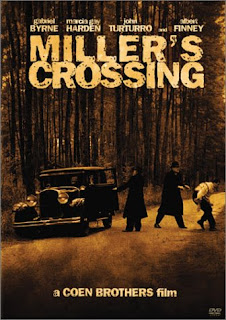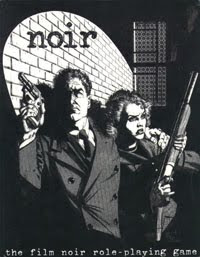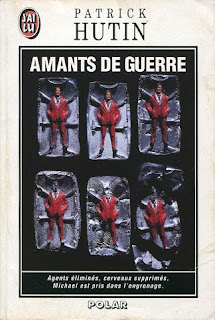Nosotros No sabíamos (Media) Exhibition
León Ferrari
Nosotros No sabíamos

September 21 - October 26, 2009
Cloister Gallery School of Fine Arts in Rennes
34, rue Hoche F-35000 Rennes
-
Monday to Friday from 15 am to 19 pm
and Saturday 14 am to 18 pm
- Tel: + 33 (0) 2 23 62 22 60
Fax: + 33 (0) 2 23 62 22 69
erba@ville-rennes.fr
http://www.erba-rennes.fr /
Opening Monday, September 21 to 18 h
-
Conference
Andrea Giunta, theorist,
Professor at the University of Texas
and Buenos Aires.
at the invitation The Auction Centre of Contemporary Art
, Rennes
ERBA
Auditorium Sept. 22 at 17 pm
-
"photogravures re-play
Performance Julien Jeanne
around the work of León Ferrari héliographiée
- Dancing Museum
38, rue Saint-Melaine, Rennes
Performance to 19 pm The opening day
Friday, September 25
2, 9, 16 and 23 October
Commissioner: Chantal Bideau
- The association
Travesías develops projects in recent years at the confluence of art and writing. She organizes trips to artists, poets and theorists, the idea of generating the link between the regions outside the main roads. It helps to reflect on the ways of thinking and doing art today. The network of human relations in return trips, the transition from local to global are the key concepts of the draft Travesías in this era of all virtual.
The first exchanges were initiated from Argentina because of the very special relationship to this country with Europe. Thus, in 2007, putting Rennes Au Bon Accueil, Tucuman Arde archive, avant-garde movement of the sixties in Argentina, gave an insight into the involvement of artists from that era. In discussions of artists appeared the sake of ensuring that their social and political rejoin the experimental side of their artistic language. León Ferrari has been involved in this movement.
Continuing this research, Travesías presents the exhibition "Nosotros no sabíamos" partnership with the School of Fine Arts, Contemporary Art Center Auction and Dancing Museum of the City of Rennes.
Between the years 1976 and 1983, Argentina lived under one of the most terrible dictatorships of Latin America. "Nosotros no sabíamos" brings together a series of illustrations, collages and photogravures of León Ferrari made in 1976. In the years that followed the dictatorship, the phrase "Nosotros no sabíamos" was commonly heard among the people: "we do not know." This term refers to negligent and complicit attitude of much of society in relation to the events of seven years of horrors. Ferrari has chosen this title for all the newspaper clippings that has met during the first phase of the dictatorship. He was in exile in Brazil following the disappearance of his son Ariel is one of 30 000 missing and murdered during this period. The information passed through the sieve of censorship or deliberately infiltrated newspapers helps maintain the climate of terror. By highlighting a fact that anyone could perceive, the artist says that "we did not know" was impossible.
Back in Buenos Aires, Ferrari makes collages to illustrate the book Nunca más Página/12 edited by the newspaper and the editorial department University of Buenos Aires in 1995. Each week, the newspaper offered its readers a booklet with the various sections of the text and illustrations of the artist. Nunca más is the ratio of the national commission that dealt with research on state repression and the disappearance of people during the dictatorship (CONADEP). It was first published in 1984. The expression
nunca más, "never again", reflects the will of Argentines not to relive the events of that painful past.
In the series "L'Osservatore Romano" and "Nunca más" Ferrari shows the relationship between the iconographic representations of hell over the centuries and the contemporary practices of torture. In 1965, with Western and Christian Civilization, bonding of a Christ on a U.S. bomber denouncing the Vietnam War, he questions the reports that political power has with the power of the clergy. All of his work, containing subversive elements, drew protests from conservative Catholic movement who lobbied for the closure of facilities at various exhibitions in Buenos Aires.
Throughout his career, Ferrari is experimenting with various techniques and devices - Photocopy of the sound sculpture, writing in the manner of abstract collages Michaud realistic. During his exile in Brazil, he made photogravures in which it uses standard images, of Letraset, usually associated with architectural plans, composing uninhabitable areas where the rules of planning are disrupted and where conviviality is impossible. This symbolizes both chaos and order. "About photogravures of León Ferrari (Buenos Aires in January 2008) the Commissioner Andrés Duprat describes this work:
" Through the drawing of architectural plans and use of prints, Ferrari built works that exacerbate imagination to the limits of human relationships. Nodes highway impossible roundabouts which concentrate masses of people, structures in which the use of cars and pedestrians are reversed, space organizations contradictory constructions unlikely that we rush into a world of strange fascination. These photogravures, presented at the Museum of the dance will be performed by Julien Jeanne in a series of dance performances.
Argentine theorist Andrea Giunta invited by the Centre of Contemporary Art Auction, deepen the insight into the work of this iconic artist in his lecture "The Case of Ferrari." Giunta is a specialist in art of the sixties, is investigating the relationship between avant-garde artistic and political development of modernity in Latin America.
Through this exhibition, Travesías wishes to offer the public in the region a wider knowledge of the Argentine art by focusing on the work of one of its most renowned artists and influential for younger generations.
Chantal Bideau and Bernice Gustavino
Rennes, July 2009
Short Biography of Leo Ferrari Ferrari
León was born in 1920 in Buenos Aires. In the fifties, he studied sculpture with a variety of materials: ceramic, plaster, cement, wood, and he made his first exhibitions in Argentina and Europe. By the early sixties, he creates sculptures out of wire. He also began his "scriptures": abstract designs that mimic the writing without really being read.
In 1964, Ferrari group of artists participating in the Institute Torcuato Di Tella, headquarters of the avant-garde art in Buenos Aires. At that time, he designed assemblies bottles, cages and dolls and is interested in religion and politics. In 1965, he introduced Western civilization and Christian at the cost of the Institute Torcuato Di Tella. It was a replica of an American bomber which was fixed a figure of Christ crucified. The institute has decided not to accept this collage for his criticism of the imperialist policy of the United States in Vietnam and the reference to the power of the Church were too explicit. This piece has become a paradigm in the tradition of the avant-garde aesthetics and politics of art of the twentieth century. After
one step more abstract, he resumed the religious iconography to make collages and photomontages. Images of hell in paintings of the masters of the Middle Ages or Renaissance are thus made in connection with photos and newspaper articles. He wonders in particular on the idea of punishment and hell in the Christian church, it connects with contemporary practices of torture. At this time, he also produces objects that combine small figures, icons of the Church as saints or virgins, with animal feces. In The Last Judgement, he installed an aviary with doves and placed at the bottom of the cage a reproduction of the Sistine Chapel ceiling by Michelangelo. The work s'autoproduisait with feces of birds. It combines the process and art and political provocation by violating an iconographic work in the manner of the Mona Lisa with a Moustache by Marcel Duchamp.
León Ferrari has participated in numerous exhibitions in Europe and the Americas as the last Biennial of São Paulo and the Mercosur in Porto Alegre. In 2007 he won the Golden Lion at the Venice Biennale and participated in Documenta 12. MoMA in New York recently showed his work in the exhibition "Tangled Alphabets "with the Brazilian artist Mira Schendel.
For more information: www.leonferrari.com.ar
Andrea Giunta and "L'Affaire Ferrari
Specialist Argentine art of the sixties, Andrea Giunta followed the wide path of artistic Ferrari controversy since its participation at the cost of the Institute Torcuato Di Tella in 1965 until his anthology in Mexico in 2008. His book El Caso Ferrari. Arte censura y libertad de expresión in the retrospectiva en el Centro Cultural Recoleta, 2004-2005, published in 2008, brings together texts to address the complex relationships between art, censorship and society. During the major retrospective of Ferrari at the Cultural Center Recoleta Buenos Aires in 2004, she curated the author examines such concepts as "free speech", "responsibility" and "public order" under legal discourse generated around the "Ferrari case." It also analyzes the role of public institutions in the artistic and the limits of contemporary art.
Andrea Giunta is a professor and researcher in art history, she teaches Latin American art at the University of Texas, Austin, United States, where she directs the CLAVIS (Center for Latin American Visual Studies) is also a researcher at CONICET, Argentina. In his book Vanguardia Internacionalismo y política. Arte argentino de los años sesenta (published in Buenos Aires Paidós in 2001 and reissued in 2008 by the publisher Siglo XXI, then translated into English and published by Duke University, Durham, North Carolina, in 2007 ), it examines trends in avant-garde of that period and the process of internationalization of Argentine art. She recently presented Poscrisis. Arte argentino dopo 2001 (Siglo XXI, 2009).
conference Sept. 22 at 17 pm in the auditorium of the ERBA
"Rotogravure" performative exhibition of photogravures of Leon Ferrari

Choreographer Jeanne Julien devised a project inspired by the series of photogravures of León Ferrari. With the help of a group of amateurs and sound artist Damien Marchal, he wants to build a moving space at the border between exposure and performance will be achieved when a series of actions, both visual and choreographic sound emanating directly from these impressions in connection with photogravures of Ferrari.
performance on opening day and Friday 25 September and on 2, 9 and October 16 to 19 hours.

































